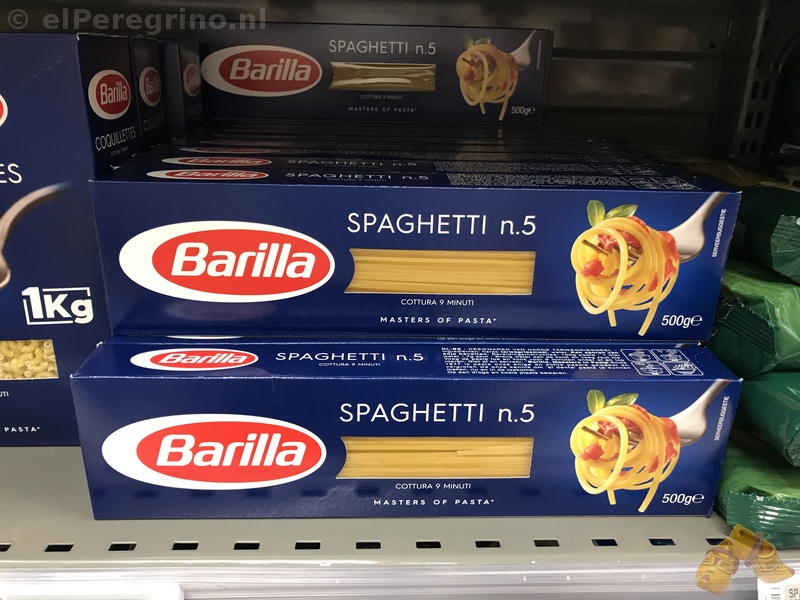Simpele salades voor de lunch
Omdat vorig jaar diabetes is geconstateerd, heb ik mijn dieet moeten aanpassen. En ik moet zeggen dat ik dat makkelijker heb gevonden dan ik verwacht had.
Eén van de wijzigingen die ik gemaakt heb, is dat ik nu elke dag een eenvoudige salade maak voor tussen de middag. De basis voor die salade is vrijwel altijd hetzelfde, maar om me niet te gaan vervelen, varieer ik elke dag een beetje met de smaak.
Bij die salade eet ik dan 2 meergranenboterhammen. Die boterhammen eet ik zonder beleg, maar voor een beetje extra bite doe ik ze wel even in de broodrooster.
En bij dat alles een groot glas mineraalwater, met of zonder bubbels.
En deze super-gezonde en super-lekkere lunch heeft eraan bijgedragen dat mijn bloedsuikerwaarden nu weer perfect zijn (maar uiteraard ligt dat niet alleen aan deze salades).
Maar wie geen diabetes heeft, maar gewoon gezond wil eten, kan hier natuurlijk ook zijn of haar voordeel mee doen.
De basis
Nodig:
- 1 Sucrine of Little Gem (mini-kropje sla)
- 1 tomaat
- ¼ komkommer
- eventueel een uitje
- (olijf)olie
Uiteraard kun je ook andere sla gebruiken, als je daaraan de voorkeur geeft. Wat ik prettig vind aan die kleine kropjes bindsla, is dat het heel makkelijk te doseren is (1 kropje per dag), en dat ze lang houdbaar zijn.
Snijd de tomaat en het stuk komkommer aan stukjes of plakjes, en snipper er eventueel een uitje bij.
In plaats van er brood bij te eten, zou je ook wat gekookte volkorenpasta of zilvervliesrijst door de salade kunnen doen.
Of je zou croutons kunnen maken van het brood: neem een vrij compact brood (niet teveel luchtbellen), snijd de korst eraf, snijd het brood in blokjes, en bak die blokjes in een koekenpan met een klein beetje olie en bijvoorbeeld wat knoflook op niet al te hoog vuur tot ze knapperig zijn; laat afkoelen op een stuk keukenpapier, en meng ze door de salade.
Variant 1
Nodig:
- de basis
- een pakje hamblokjes (75 gr.)
- 2 of 3 eetlepels saladekaas
Ik koop altijd blokjes saladekaas in olie, en gebruik die olie dan uiteraard ook voor in de salade.
Deze variant kun je nog wat meer smaak geven door er wat provencaalse kruiden doorheen te scheppen.
Variant 2
Nodig:
- de basis
- een blikje tonijn
- 10-12 zwarte olijven
Als je tonijn in olie gebruikt, kun je die olie ook gebruiken in de salade. Als je tonijn au naturel hebt (in water), laat ‘m dan goed uitlekken voordat je ‘m door de salade schept, en gebruik gewoon olie uit de fles.
Snijd de olijven in plakjes.
Variant 3
Nodig:
- de basis
- een pakje kipfiletblokjes (75 gr.)
- een handje gebakken uitjes
- een handje pijnboompitten
Gebakken uitjes vind je in de supermarkt bij de oosterse ingrediënten.
Deze variant kun je eventueel een beetje opfrissen met wat tuinkruiden.
Variant 4
Nodig:
- de basis
- 1 of 2 gekookte eieren
- 2 of 3 eetlepels gebakken spekblokjes
Bak de spek zonder toegevoegde olie of boter in een koekenpan met anti-aanbaklaag. Schep ze dan met een schuimspaan uit de pan, en laat ze afkoelen op een stuk keukenpapier. Op deze manier heb je zo min mogelijk vet in je salade.
Bij deze variant is de gesnipperde ui wat mij betreft niet optioneel, omdat dat een lekker fris accent geeft tussen het ei en de spek.
Varianten 5, 6, 7, …
Leef je uit, laat je gaan.
Maïs, gedroogde tomaatjes, sardientjes, augurken, zilveruitjes, knakworstjes…
Of vervang de sla bijvoorbeeld eens door witlof.
Je kunt echt alle kanten op. Het is zo makkelijk, en zo lekker, en zo gezond.
Bereiding
Schep alles door elkaar.
Als je deze salades mee naar je werk of naar school wilt nemen, dan kun je ze prima thuis voorbereiden, maar verpak de gesneden ingrediënten in aparte bakjes, en meng ze pas als je gaat eten. Zo voorkom je dat het een kleffe drab wordt.
Smakelijk!

